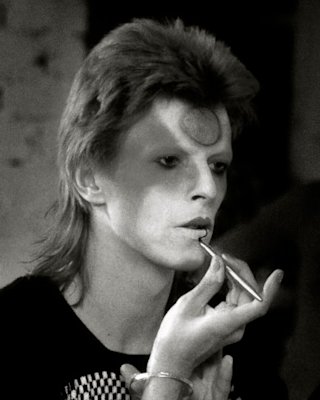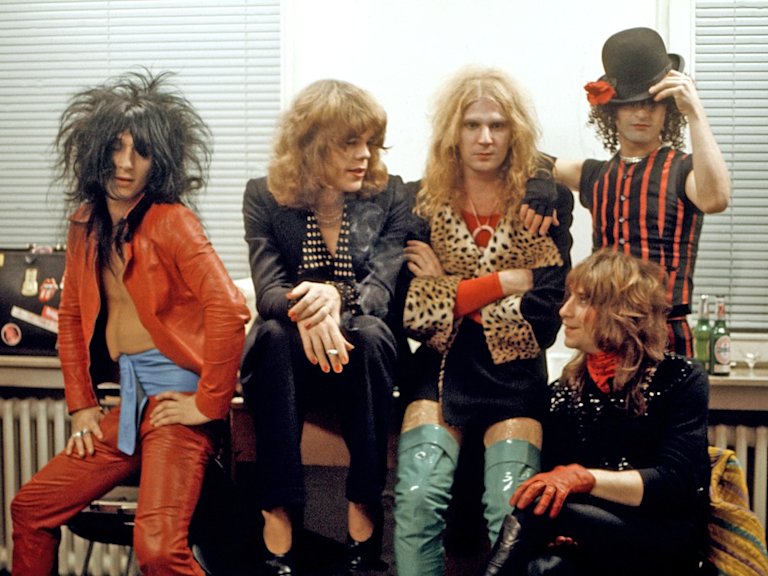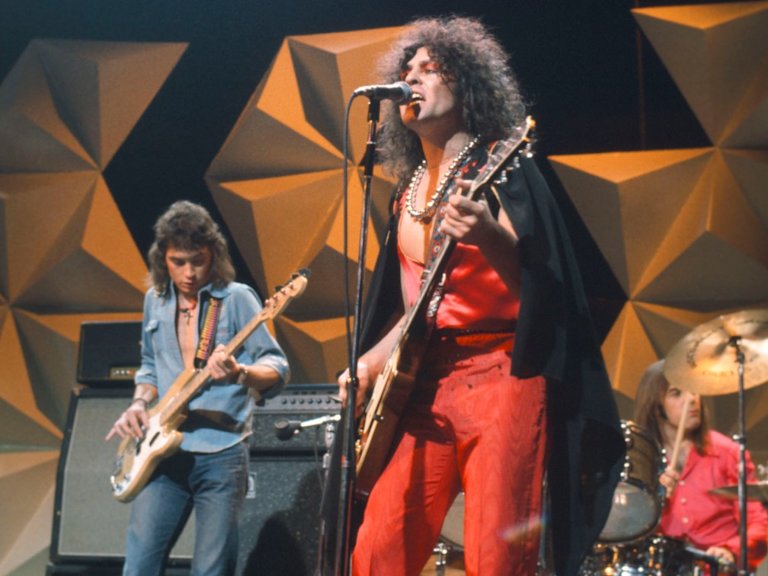
David Bowie applies make-up as he prepares for a performance as his alien alter-ego 'Ziggy Stardust.'
Post-industrialism was wreaking havoc in the ‘70s, and as The Troubles shook Northern Ireland, workers all across the UK were demanding better pay and conditions through strike action. The Summer Of Love had cooled off, and the freewheeling ‘60s were soon replaced by a more straight-laced sound. But the serious and earnest artists didn’t rule the roost for long.
Early on in the decade, glam rock exploded in a burst of playfulness and androgyny, bringing with it big make-up, flamboyant outfits and authentic, hook-filled rock songs that stomped with life. This was an antidote to some of the bleaker realities found elsewhere – a vibrant new form of escapism that allowed listeners to disconnect into a world of fantasy via songs about cosmic dancers and spiders from Mars.
"... Glam Rock exploded in a burst of playfulness and androgyny..."



Fashion and gender expression were integral to the genre, particularly when it came to its male artists. Instead of continuing the beards-and-denim look of the late ‘60s, glam provided a shake-up, as leading men like T. Rex’s Marc Bolan, former Velvet Underground leader Lou Reed, The Stooges’ Iggy Pop, and David Bowie began dressing in women’s clothes and make-up. The UK had only partially decriminalised homosexuality a few years earlier, and narrow-minded attitudes about sexuality and gender still dominated. But this counterculture movement gave men new ways to express themselves – in ways that didn’t conform to hegemonic masculinity.
"Glam Rock, full of decadence and showmanship, has been pushing boundaries of sexuality and gender norms ever since"
The trend was male-dominated, but glam impacted women’s fashions, too. Female stars like Suzi Quatro adopted androgynous and angular looks that borrowed from male counterparts as much as they had borrowed from the women. In both instances, the genre and the lifestyle around it laid stepping stones to more fluid presentations of gender. Glam rock, full of decadence and showmanship, has been pushing boundaries of sexuality and gender norms ever since. The movement’s androgynous legacy would be later witnessed in US glam-punk bands like New York Dolls and The Runaways, metal bands like Judas Priest and Def Leppard, and contemporary acts like My Chemical Romance, Måneskin, and even Harry Styles.

Iggy & The Stooges At The Whisky-A-Go-Go. Lou Reed performs live on stage at the Carre Theatre.


